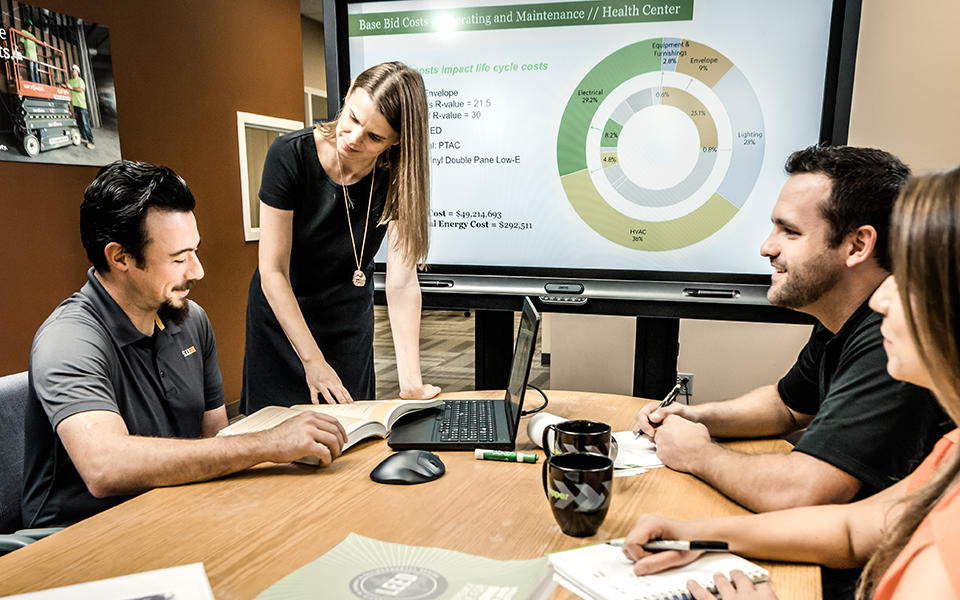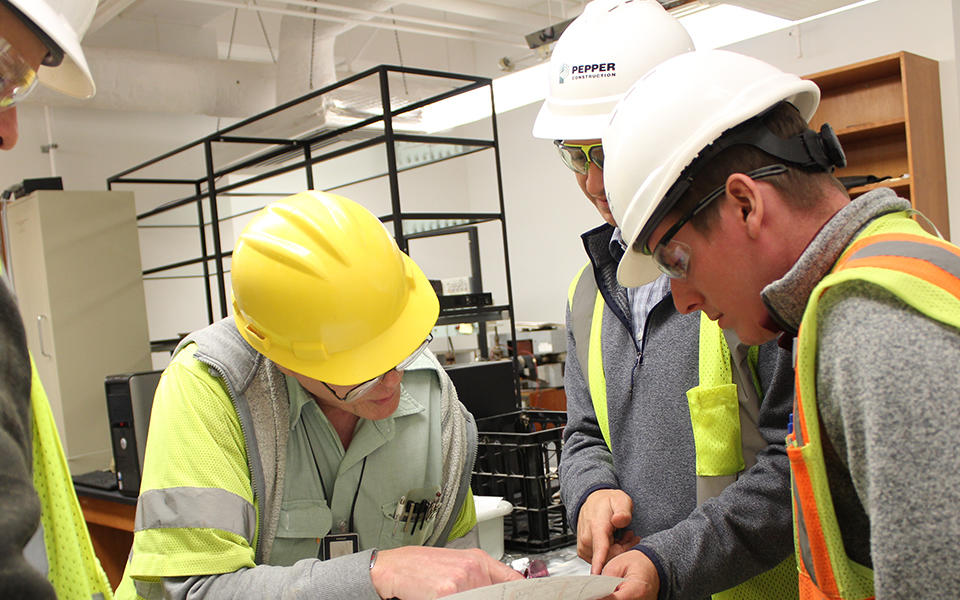Emerging technology, Virtual construction & technology
As technology transforms our industry, many companies have adopted new tools like BIM, but the degree to which they are used varies widely. Some companies are on the forefront, while others stick to traditional means and methods.
Though the work can be accomplished either way, I believe we're coming up on a "Day of Reckoning," where there will be a clear separation between contractors who look for new ways of doing things and those who continue with the status quo. The former will remain relevant and the latter will be left behind. We may even be entering that time now.
For an industry largely perceived as traditional, times are changing - especially as my generation fills leadership positions in our companies.
Acting on the right opportunities
Over the past couple years we've developed a reputation for innovation, from the Net Zero trailer to our Underground Utilities Damage Prevention (UUDP) program, to how we're testing the HoloLens. We're also engaged on some iconic projects with leading designers who require a partner to figure out incredibly difficult details. How did we get to where we are today?
In Pepper's 90+ year history, we've been on both sides of progress. At times, we've laid low, cautiously waiting to see how the market would respond before we proceed. Other times, we've recognized the value immediately and helped bring a new idea to market.
Sometimes we partner with a third party to customize a solution or help them expand their product, like the software we use for model-based estimating. Other times we develop a platform in-house, like our new Virtual Reality safety training, which was created based on our own safety metrics. The decision to proceed internally often has to do with the expertise and availability of our own resources and whether or not the information contributing to the solution is proprietary.
In order to act on any idea, it's important to have the right structure in place. In addition to a team capable of exploring new ideas, our strategic planning process helps us decide how to respond to ideas and which ones are viable options for our business model.
Welcoming diverse perspectives
A few years ago, Pepper's CEO, Stan Pepper, gave a keynote address at BuiltWorlds titled Generational Acceleration. He spoke about how technology has evolved at an accelerated pace and has become more accessible with each new generation. Company leaders were challenged to see their multi-generational workforce as an opportunity for progress rather than a business challenge.
Last year, Vice President Jennifer Suerth reiterated that message when she spoke at AutoDesk University about diversity's role in productivity and innovation. Each generation brings to the workforce new ideas and a different level of skill sets that result in growth and development for the organization and the industry as a whole. At Pepper, we've seen this play out in a tangible way.
In a blog post published last month titled A picture worth thousands, Keith Dougherty shared our story of how we started model-based estimating. It took a visionary baby boomer and a millennial to figure out how to make the concept applicable to our process and scalable for our business model. For us, it was important to leverage both estimating and modeling skill sets and to teach additional skills in the process.
Moving beyond prototyping to operationalizing
It takes a team approach to translate a new idea into how we do business, and sometimes it requires a different operational structure. About three years ago, we focused our Integrated Construction Services (ICS) to include preconstruction, technical services and high performance and sustainability. These three departments are integrated through their creation and use of 3D models. In addition to delivering higher value for our clients, this structure allows for cross-training and serves as a platform to respond to new ideas.
Once a new solution is proven, it still takes time and flexibility to get others on board - and we're constantly working on that. To make model-based estimating "what we do" across all projects, it meant expanding software options and workflows to work for different teams.
It also required a different mindset within our preconstruction department. Our preconstruction team is a mix of seasoned and young estimators across multiple offices. Typically, they work independently. Those with significant cost estimating experience ensure our budgets are accurate and effectively communicated to the team, but they don't all know how to model. In order for us to embrace model-based estimating as a company, the seasoned team members had to give up a degree of control and rely on their younger colleagues for the technology.
In the same way, as the leader of our ICS team, I don't need to be able to do everything that my team knows how to do. Instead, I need to leverage the different strengths of my team members.
Riding the momentum
Our ICS platform provides a structure to build off the momentum of each success. Once our new estimating model was in place, we started to notice other opportunities for innovation. It became the catalyst for our Building Performance app, which allows us to select different building components and quickly calculate upfront construction costs, long-term operating costs and expected payback periods, all while a building is still in the conceptual phase.
Why traditional companies struggle with innovation
Change is hard. There is risk involved, and even if it works once, it's an even bigger effort to make it iterative.
Our peers are anxious about model-based estimating because they see it coming, and it's such a different approach. Even for those who are willing to try, it's challenging to step back from producing estimates long enough to figure it out. It takes extra work and extra time.
Additionally, unique to Pepper, we have in-house Information Technology team members who helped us build some of these new tools. They understand both the software and the data.
The future of construction
What's next for our industry? At Pepper, even as we're still working on refining and operationalizing our current technologies, we're also talking with partners and experts about machine learning and Artificial Intelligence (AI). Anticipating this technology is very close to reality, we're organizing our data so we're prepared to take advantage of what's next. It's a daunting task and an easy one to put off for a later date. But if we're diligent now, we'll be prepared when the technology is ready.
Next month, Jim Peart be speaking about how data and technology can help reduce risks at ABX ArchitectureBoston. To hear more on this topic, I encourage you to attend his session, titled: Better Projects Through Data: The Future of Construction. Register here.
About the Author









